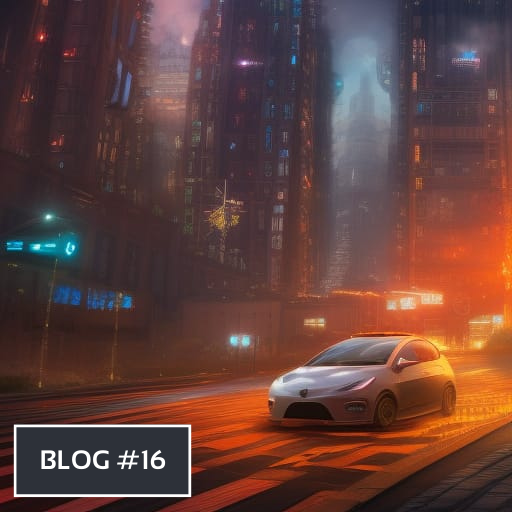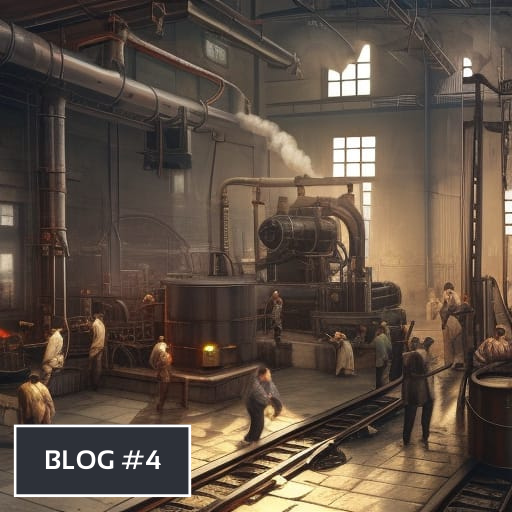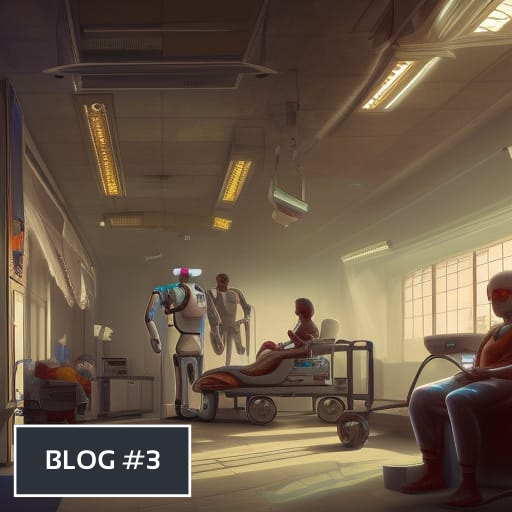Introduction
As the holiday season nears, we are of course going to see an uptick in the amount of online shopping, in person shopping, and deliveries for all manner of goods and products. During this year, there have been a few podcast episodes that have focused on the impact that the pandemic has had on tech and automation, but given the time of year, it might be more relevant to look into the recent impacts and improvements regarding automated last mile delivery brought on by both Covid-19 and technological advancements.
Overall Idea
E-commerce sales are projected to hit over $709 billion in the U.S alone in 2020 in large part because of the COVID-19 pandemic. This is a significant increase from the $601.75 billion spent online with U.S. merchants in 2019, and up further 14.9% from $523.64 billion in 2018. Logistics companies have had to focus even more on last-mile delivery due to the social distancing and quarantine measures we have all experienced limiting access to the physical shops, while simultaneously reducing labour availability. Both of these trends have converged to see the testing and uptake of automation technologies increase drastically, especially as it has been forecasted that online commerce might overtake physical shopping within only a few years.
Pilot Tests
A number of Interesting new pilot tests have come out over the last year to assess the viability of augmenting this sector with autonomous support.
Walmart Drone Delivery
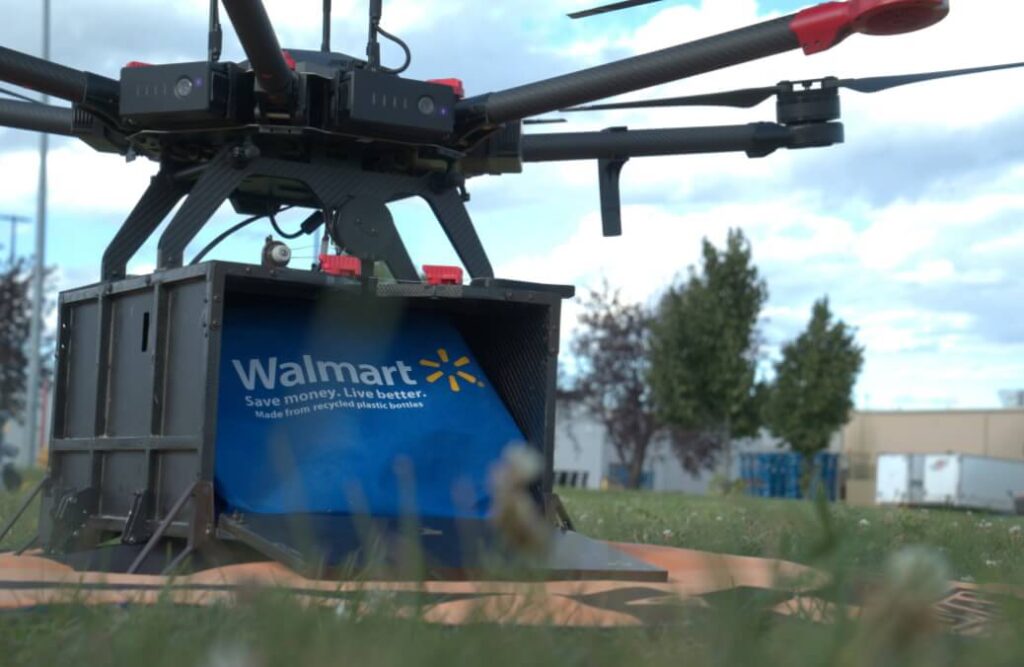
As mentioned in episode 40 of the podcast, Walmart has partnered up with three different drone technology companies to start experimenting with drone delivery technology. DroneUp, Flytrex, and Zipline. Walmart, with 4,700 brick-and-mortar locations situated within 10 minutes of 90% of the US population, has increasingly begun using its stores as “distribution nodes for e-commerce sales.” This pilot programme will primarily learn how the customers interact with this technology,” “What do they do with it? Which bits do they like? What versions of delivery mechanisms do they prefer? Is it convenient? Is it easy? Is it exciting? What do they buy? What would you have delivered through a drone?”
One of the advantages of drones is contactless delivery. Which is going to enable Covid-19 self-collection kits to customers in the northern part of Los Angeles. But each company will be trialing delivering different goods. As I’ve talked about on the podcast in the past, namely with robot delivery trials, this example shows how automated technologies are encroaching into last mile delivery jobs which themselves have been growing over the last few years, and gotten a significant boost in need due to Covid.
Amazon Scout
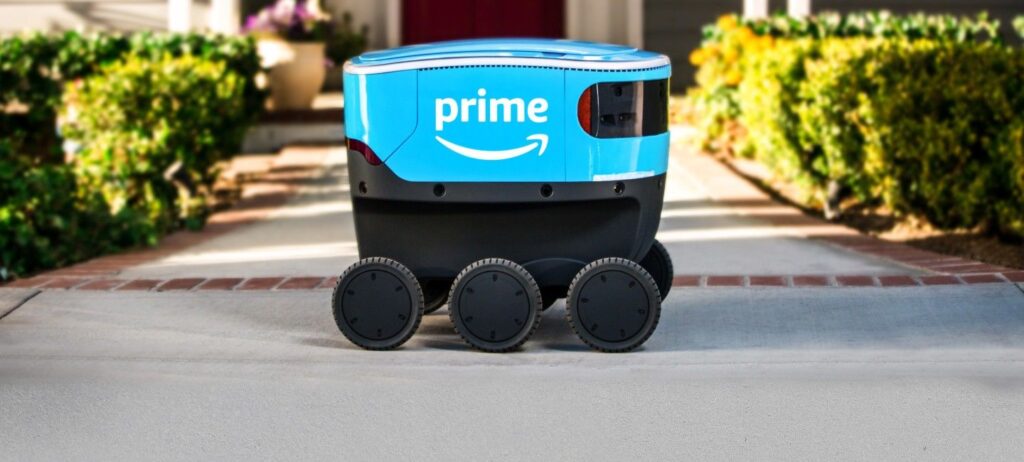
Amazon has been testing six Scout delivery robots in Washington neighborhoods since January 2019, and has since been trialed in other states including California.
(Snohomish County, Washington, Irvine, California, Atlanta, GA, and Franklin, TN.) The robots are the size of a cooler and move at the pace of a person walking.
Amazon’s development lab in Seattle has been working to ensure the technology can navigate around pedestrians, pets, trashcans, lawn chairs, and any other obstacles. Each robot is equipped with sensors and cameras to detect obstacles, which it evaluates using sophisticated machine learning algorithms to work out its path. They also contain flashing lights to draw attention to the robot when it crosses a road or completes another maneuver that may place it in the path of humans.
Irvine customers can order their Amazon package as they normally would and it will either be delivered by a worker or by an Amazon Scout. The robot’s delivery options include free same-day, one-day, and two-day deliveries for Prime members.
Most recently Amazon has setup a team in Cambridge, UK to help develop the delivery bots navigation software, responsible for avoiding people and obstacles.
Use Cases
Although large well known companies such as Walmart and Amazon may get a large amount of press coverage for simply testing their bots out, there have already been successful implementations of other last-mile delivery robots.
Starship
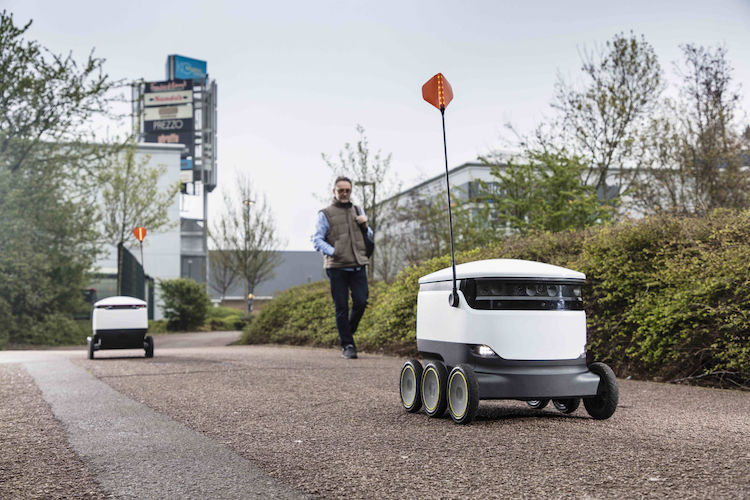
As one of the direct competitors to Amazon’s Scout, Starship has been in operation since 2014 but only recently have they been experiencing a drastic increase in interest to have their product used. Interestingly though, while others continue to test, Starship has already carried out more than 100,000 deliveries! Interestingly they also have tests outside of the USA as they expand.
UDI In China
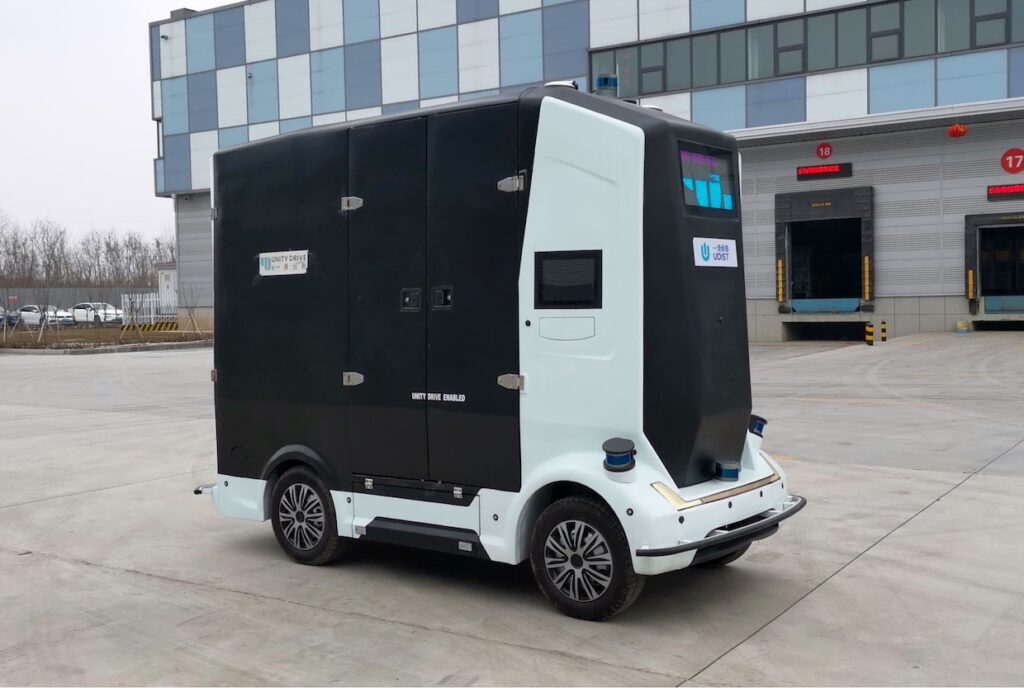
Especially during the lockdown in China UDI was used to transport goods and carry out deliveries to several confined citizens. Unlike drones or smaller sidewalk robots, UDI uses its ‘Hercules’ van that is able to carry 1000kg of goods. They have carried out several thousand trips including several for Foxconn. The Taiwanese electronics giant has since late 2018 used UDI vans to transport electronic parts and other items within its Shenzhen campus. The robots have to navigate labyrinthine routes while avoiding an unpredictable mass of pedestrians, bicycles, and trucks, which has been part of the reason why UDI now claims they are ready to operate vehicles on public roads.
Over the past couple of months, UDI has monitored its fleet from its headquarters. Using 5G, a remote operator can receive data from a vehicle with just 10 milliseconds of delay. In Shenzhen, human intervention was required about two dozen times when the robots encountered situations they didn’t know how to handle—too many vehicles on the road, false detections of traffic lights at night, or in one case, a worker coming out of a manhole.
Neolix In China
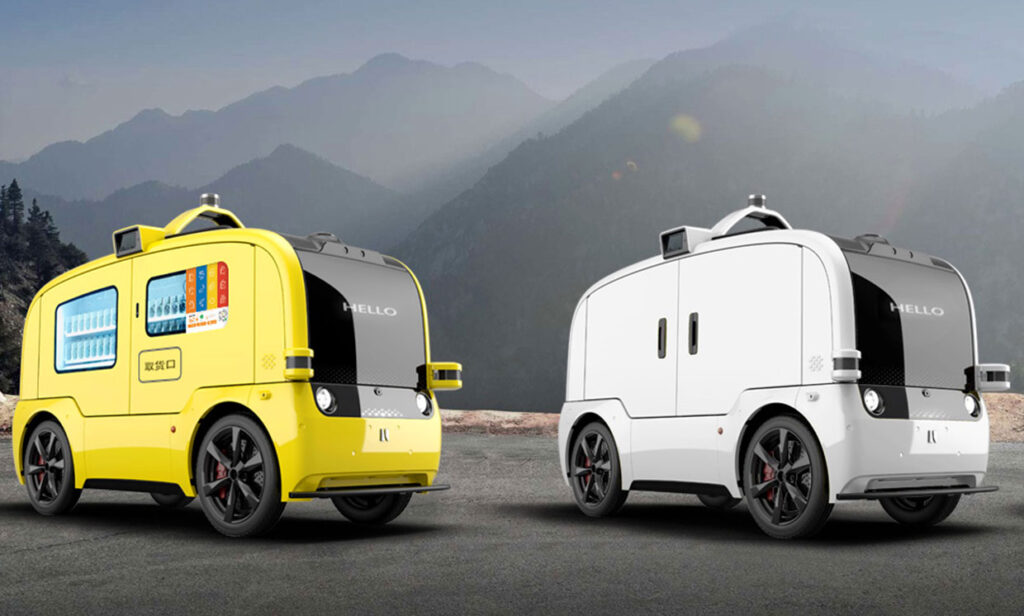
Similar to UDI, the small vans of Nero saw a rise in deployment during the lockdowns. Neolix has deployed 50 vehicles in 10 major cities in China to do mobile delivery and also disinfection service. The bots are the size of a small car, and they’re each equipped with cameras, three 16-channel lidar laser sensors, and one single-channel lidar. The low-speed version also has 14 ultrasonic short-range sensors; on the high-speed version, the ultrasonic sensors are supplanted by radars.
Neolix also received roughly $30 million in investments to increase its production of their autonomous vehicles.
Policy and Regulations
One of the key challenges that all these companies and technologies face are the regulations for operating in cities. Though not as disastrous as autonomous cars or trucks, these vehicles can still pose an issue to public safety as well as to property.
With this perspective in mind, one of the very few benefits the pandemic has brought forward is the speed and direction at which some policymakers can move given the current state of things, but also how new behaviours remain long after the social situation has passed. A small example of this is with New York City’s mayor, Bill de Blasio, who said he was suspending his long-running campaign against e-bikes. “We are suspending that enforcement for the duration of this crisis,” he said. And perhaps forever. Additionally the use of e-commerce is not expected to take a significant dive once a vaccine has been found and we go ‘back to normal’ as enough time has passed to generate new permanent behaviours in many of us.
More interestingly are the shifts towards more innovative or even risky but highly beneficial programs. The most recent and relevant comes from the UK where a possible ‘drone corridor’ has been set to open.
Drone Corridor In The UK
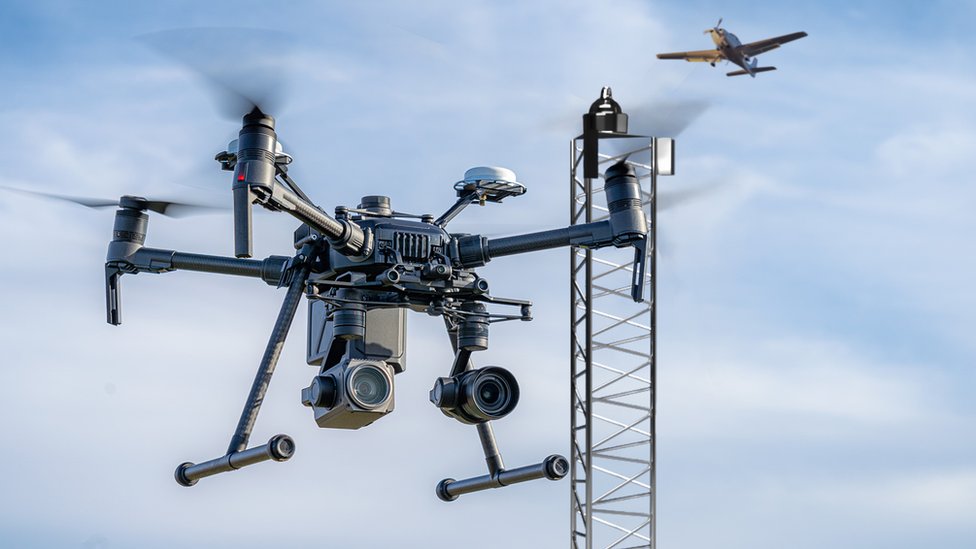
A commercial drone corridor could open in the south of England. The allocated 8km long and 500m wide area south of Reading, Berkshire, aims to allow drones to be operated safely out of the pilot’s sight. Project Arrow will see drones being tracked and monitored via Altitude Angel’s UTM platform, which communicates with ground and aerial infrastructure to provide automated navigation for drones flying within the zone.
The goal is to enable automated drones and general aviation to harmoniously co-exist in a real-world environment, where drones can be used to deliver goods and medical equipment. This is part of the granting of drone flight waivers to help with the COVID-19 response. The Federal Aviation Authority (FAA) in the US has noted that the lack of air traffic at present makes the use of drones relatively less risky, which is why it is granting the waivers. CAAs in the UK as discussed above, but also in India and Sri Lanka are also making it easier to deploy drones in response to the pandemic.
Automation & Jobs
It is possible that this regulatory easing will be continued as the issues with the pandemic won’t go away until we see a large scale roll out of an effective vaccine. Though obviously beneficial for tech startups and incumbents, and perhaps for the users of the services, the issues of automation’s impact on last-mile delivery jobs is yet to be seen here. Currently, due to the various lockdown situations we are also simultaneously seeing labour shortages in these areas, and while these various technologies do supply the much needed ‘man-power’ we will have to see if there will be an occupation available in the near future, or if these machines will become so apt at navigating and delivering that the entire boom of the self-employed delivery-man/gig-worker will whittled away.

